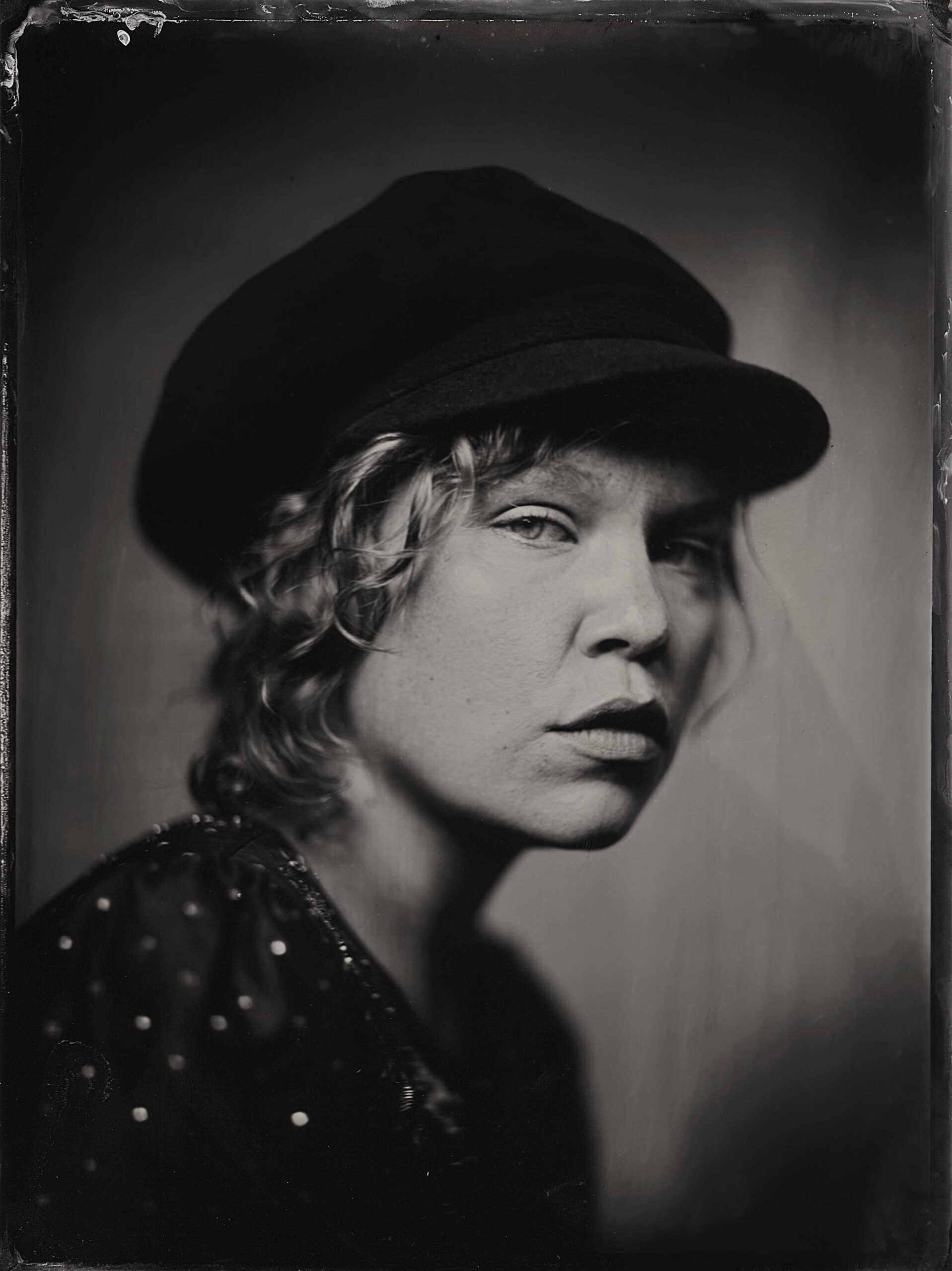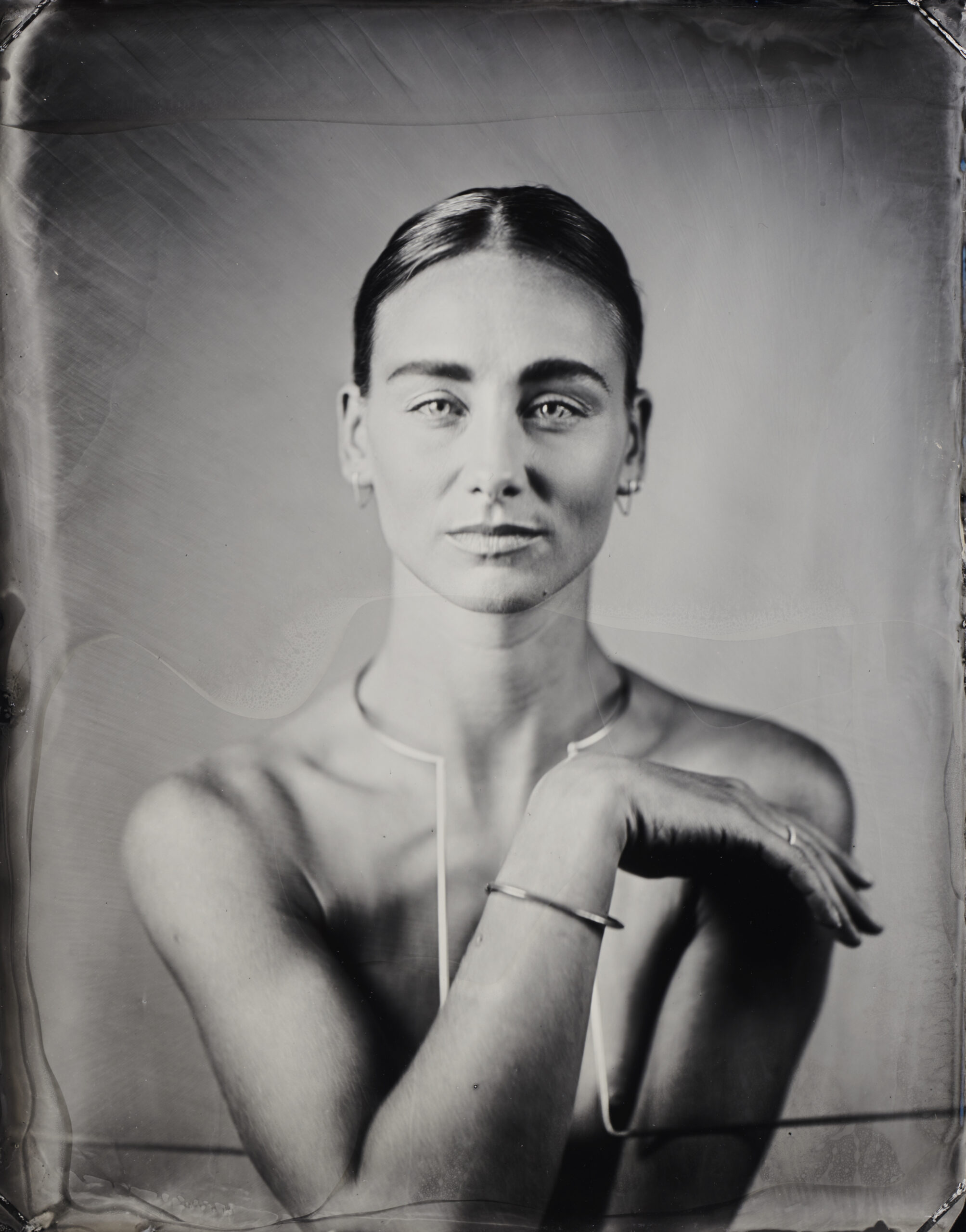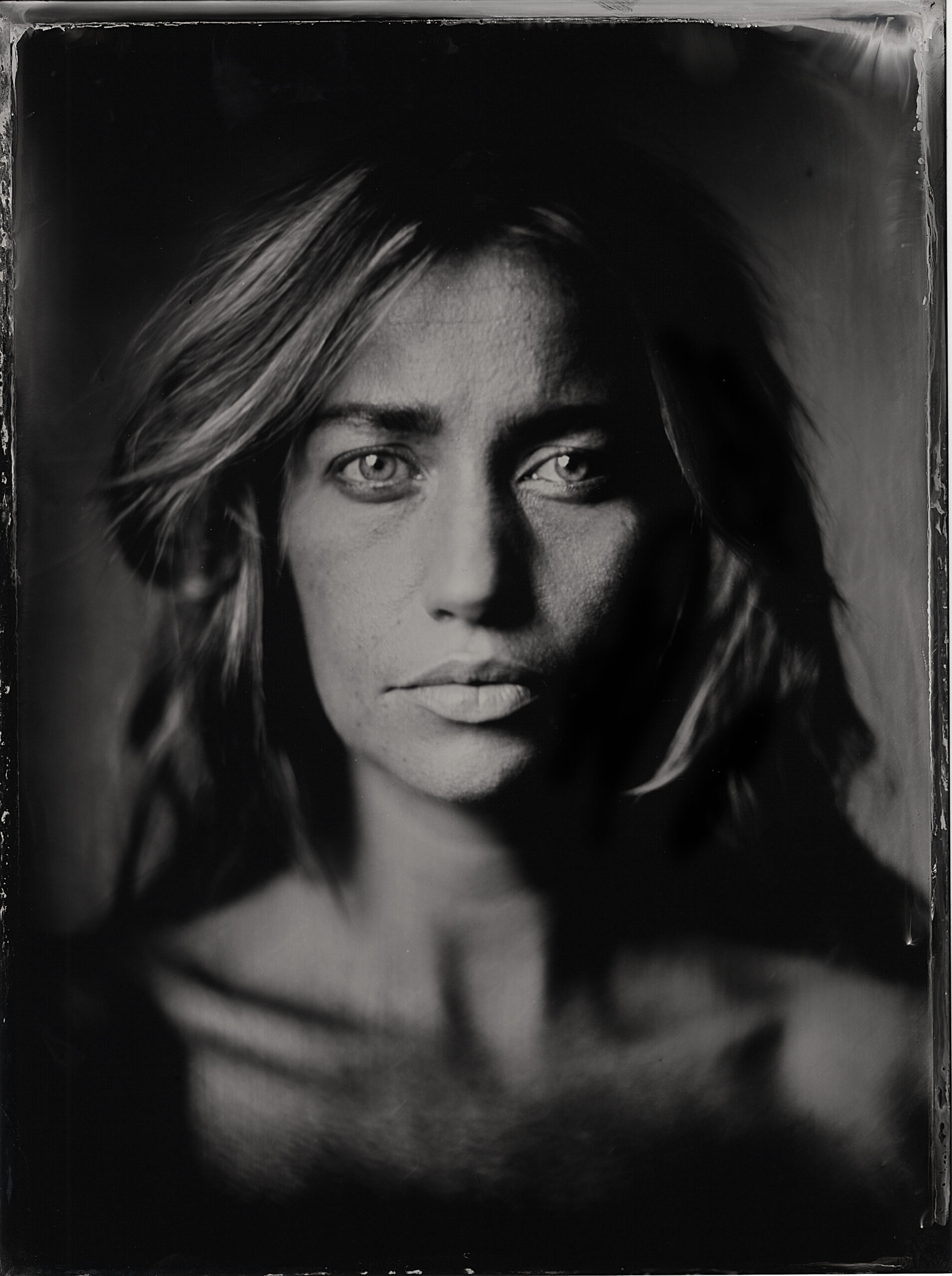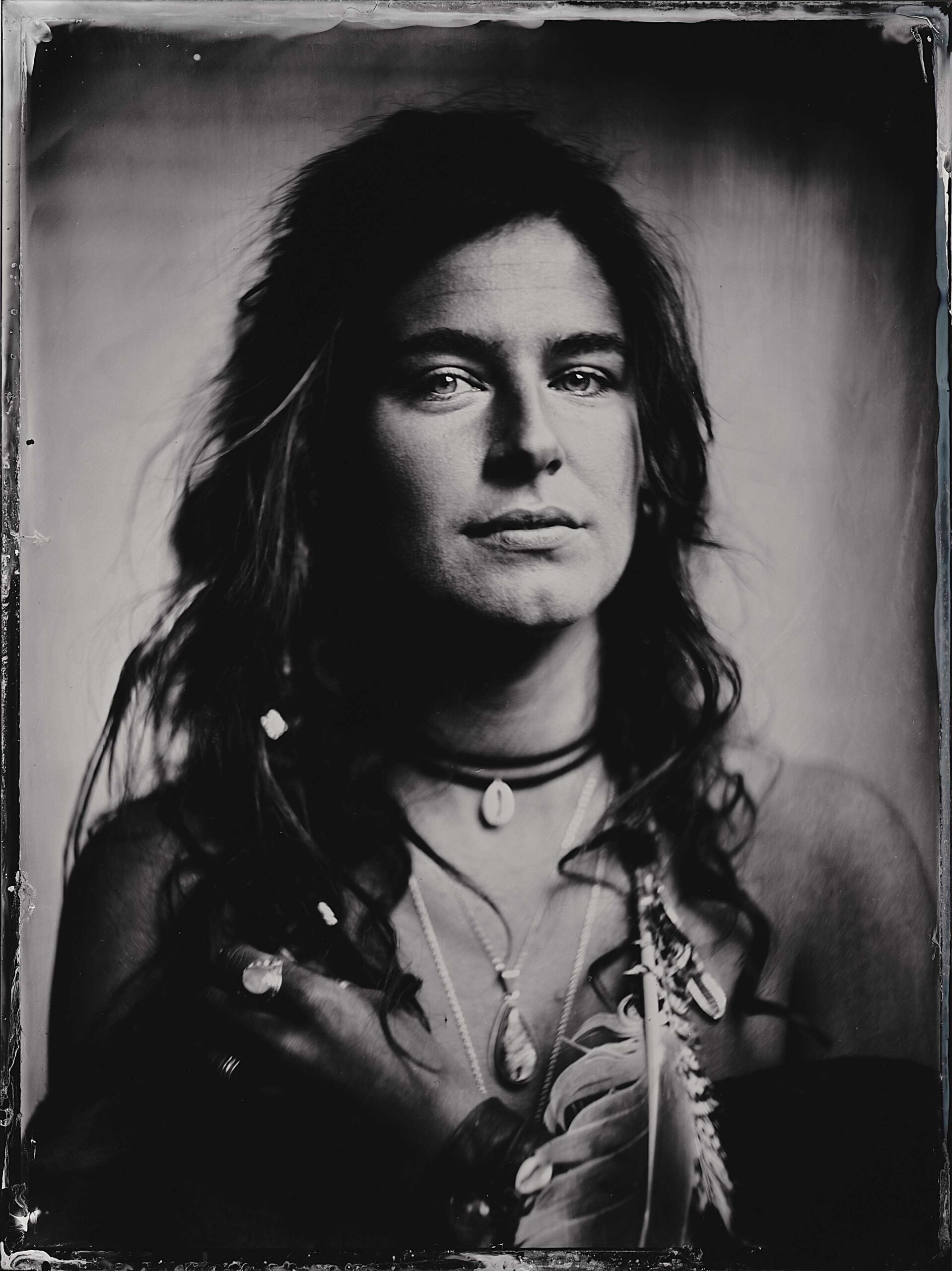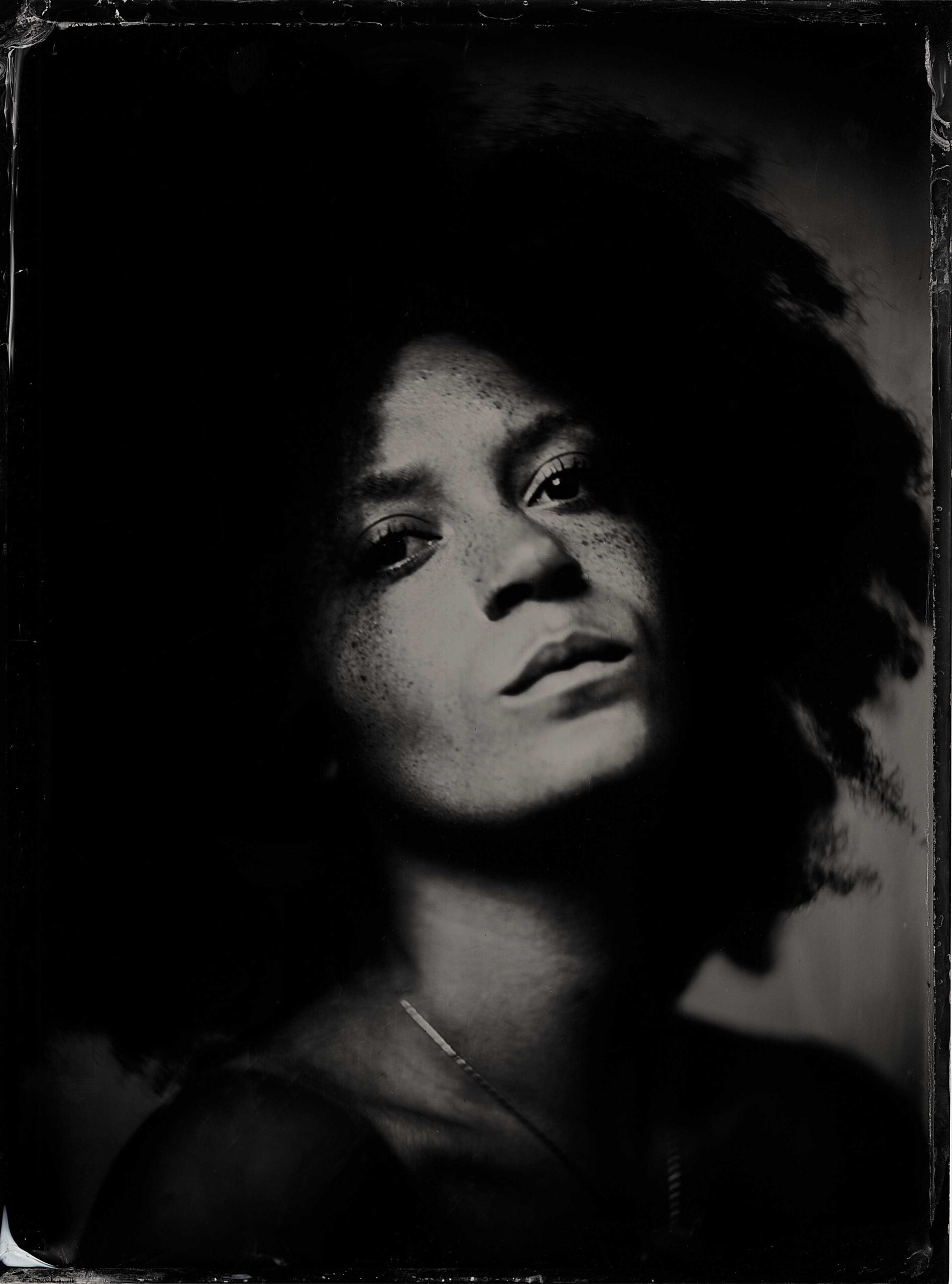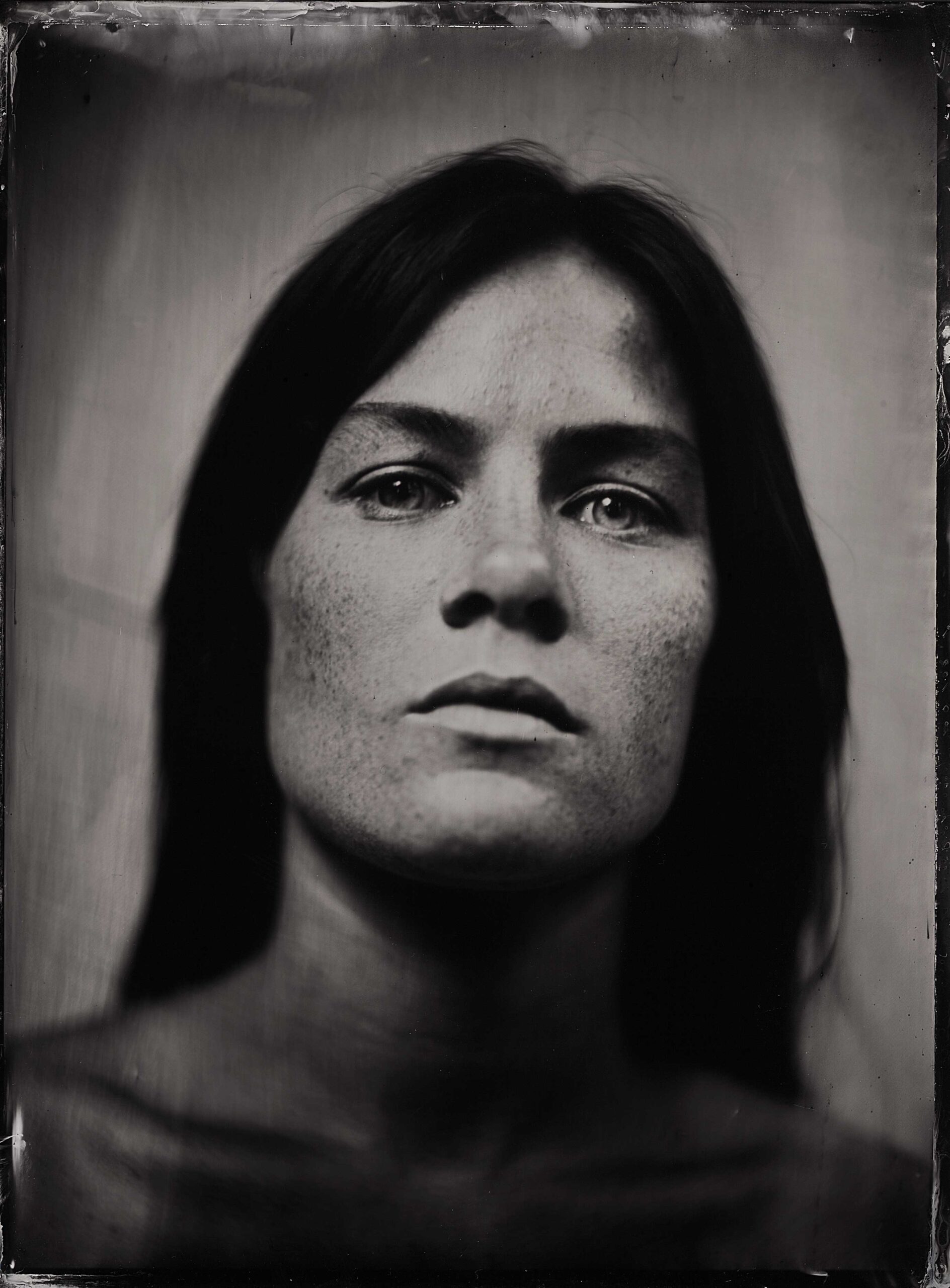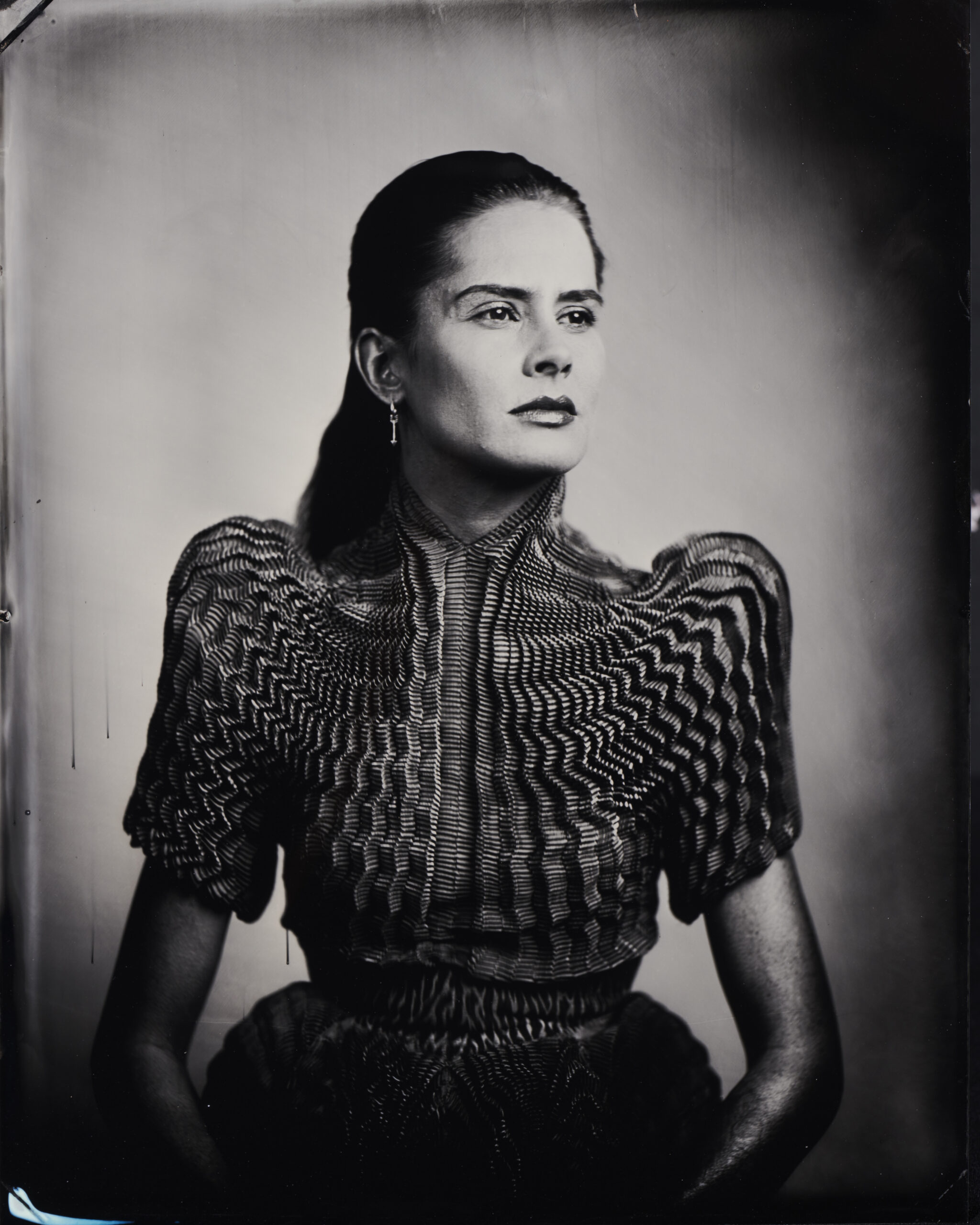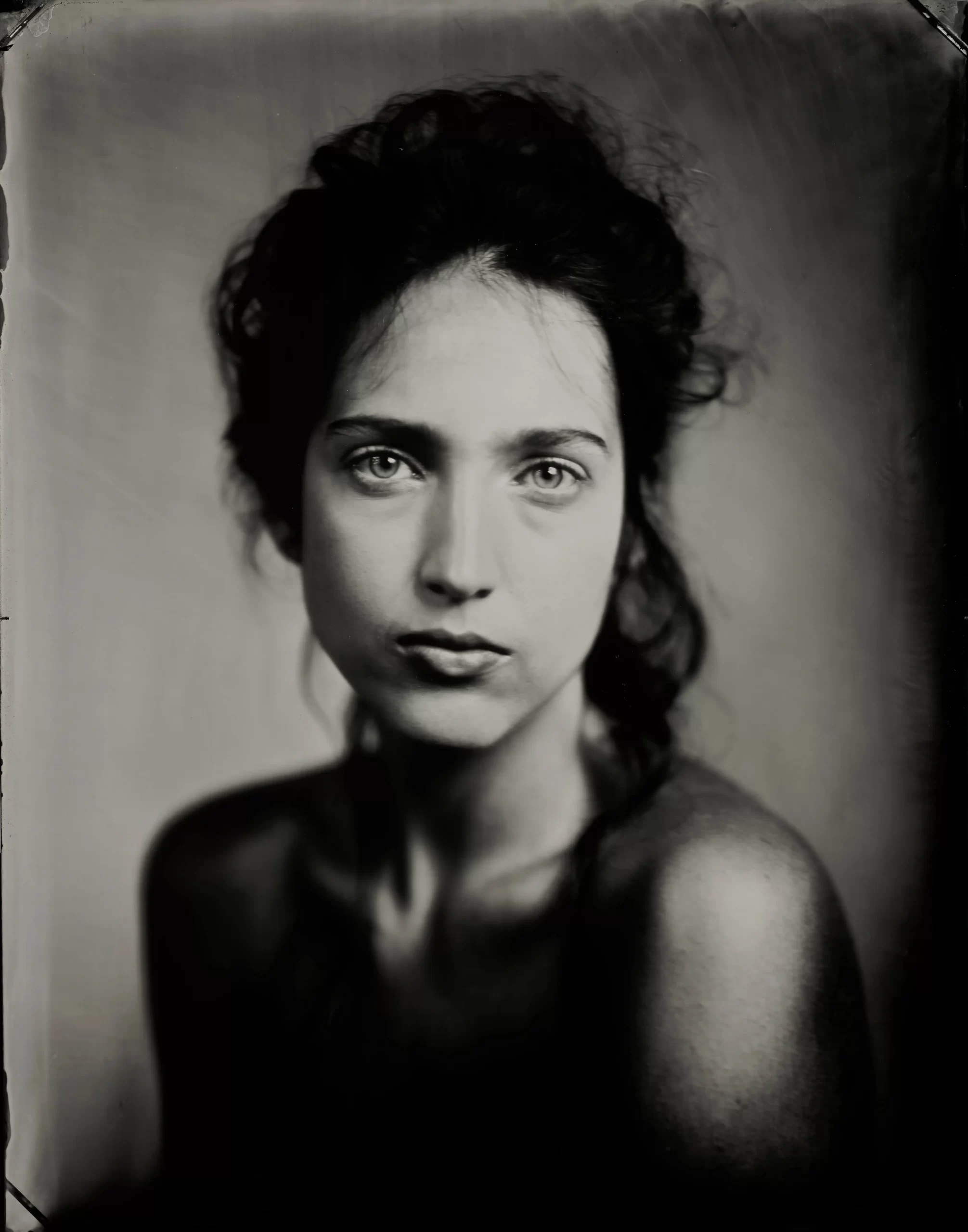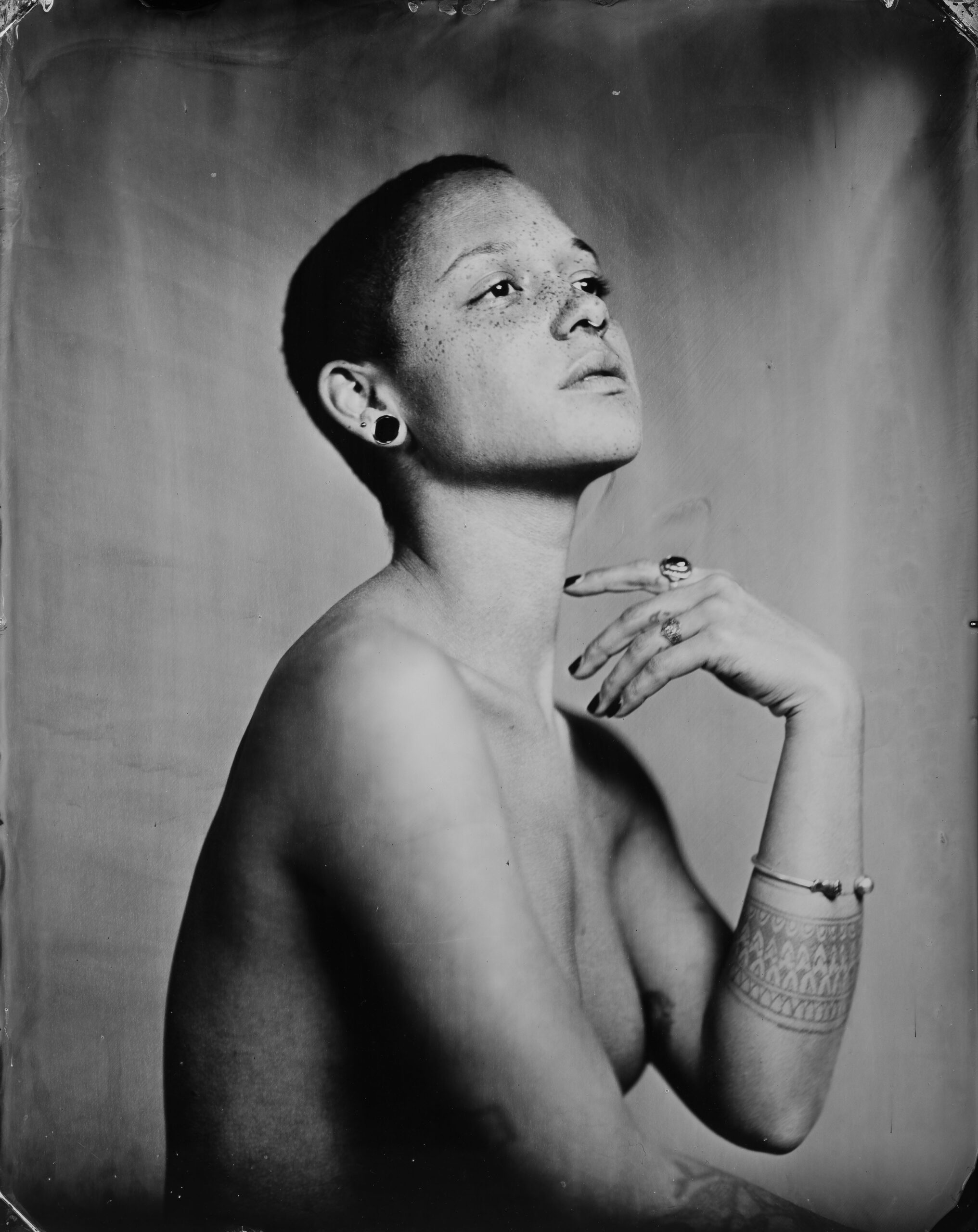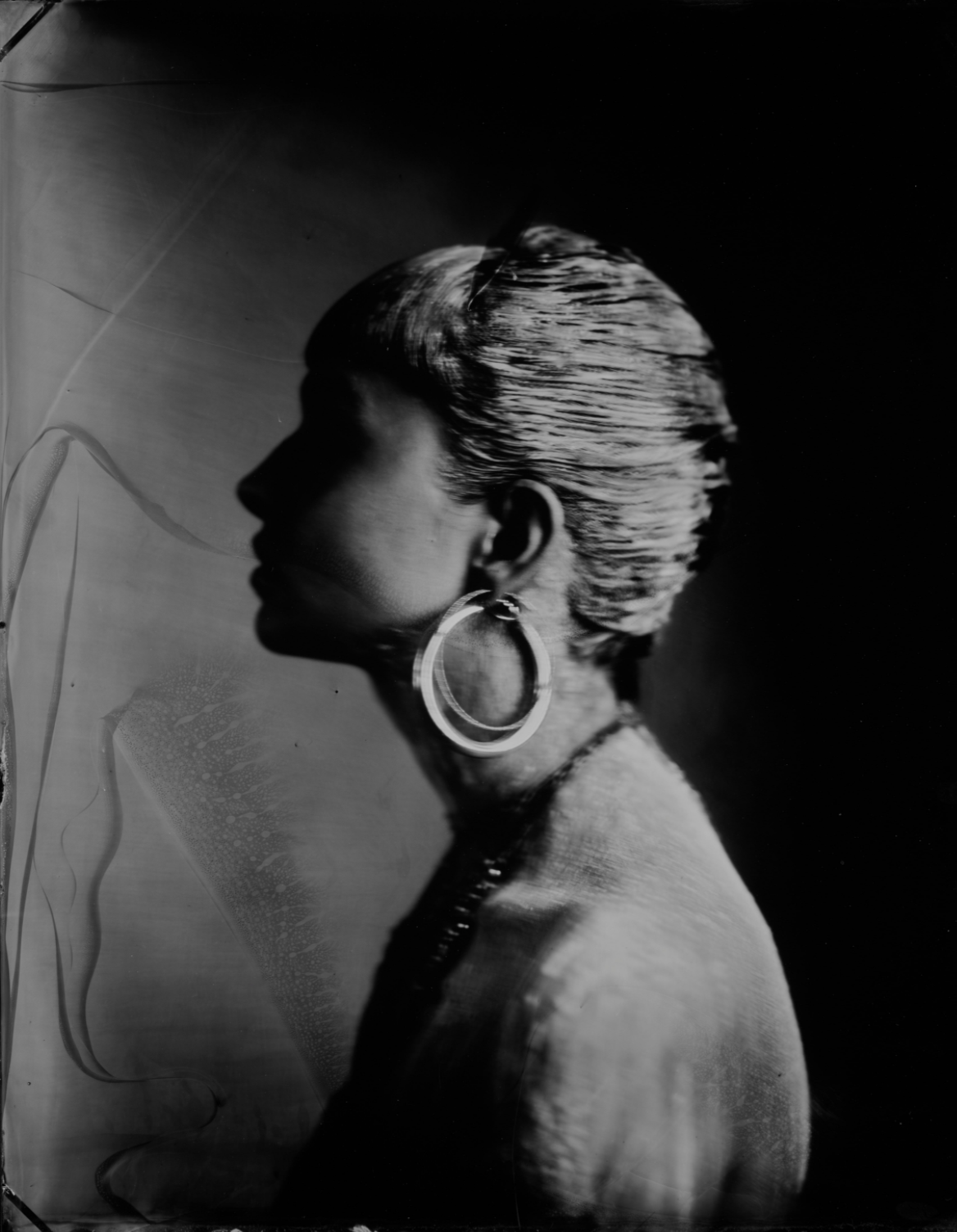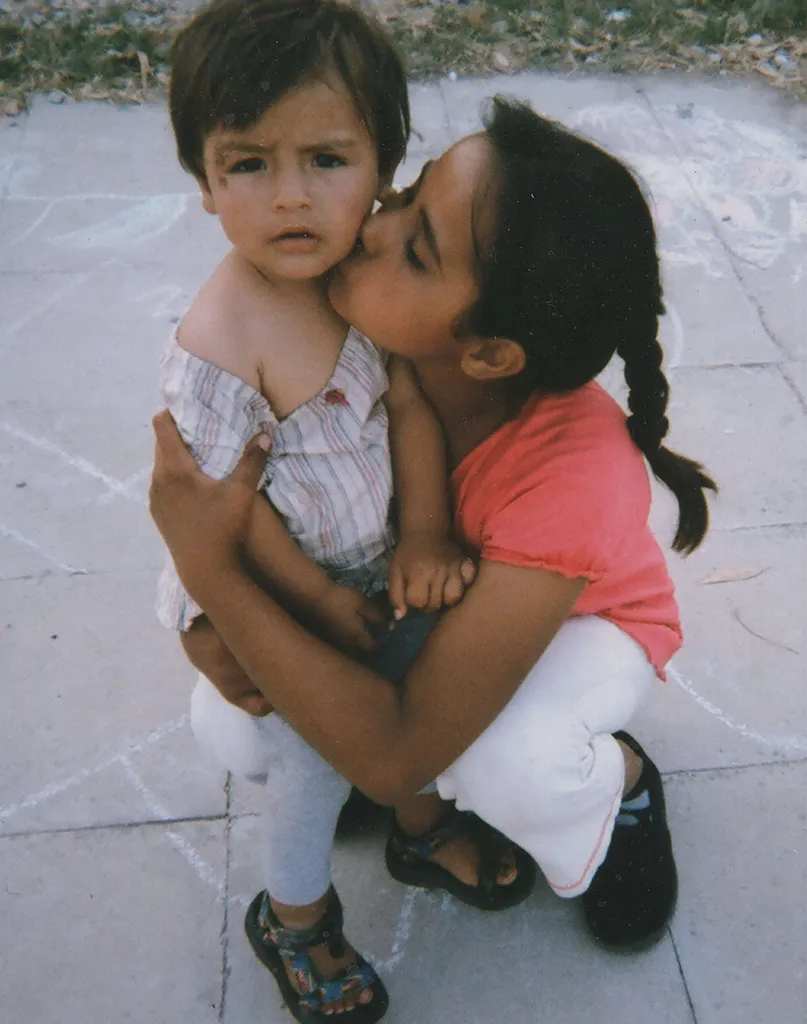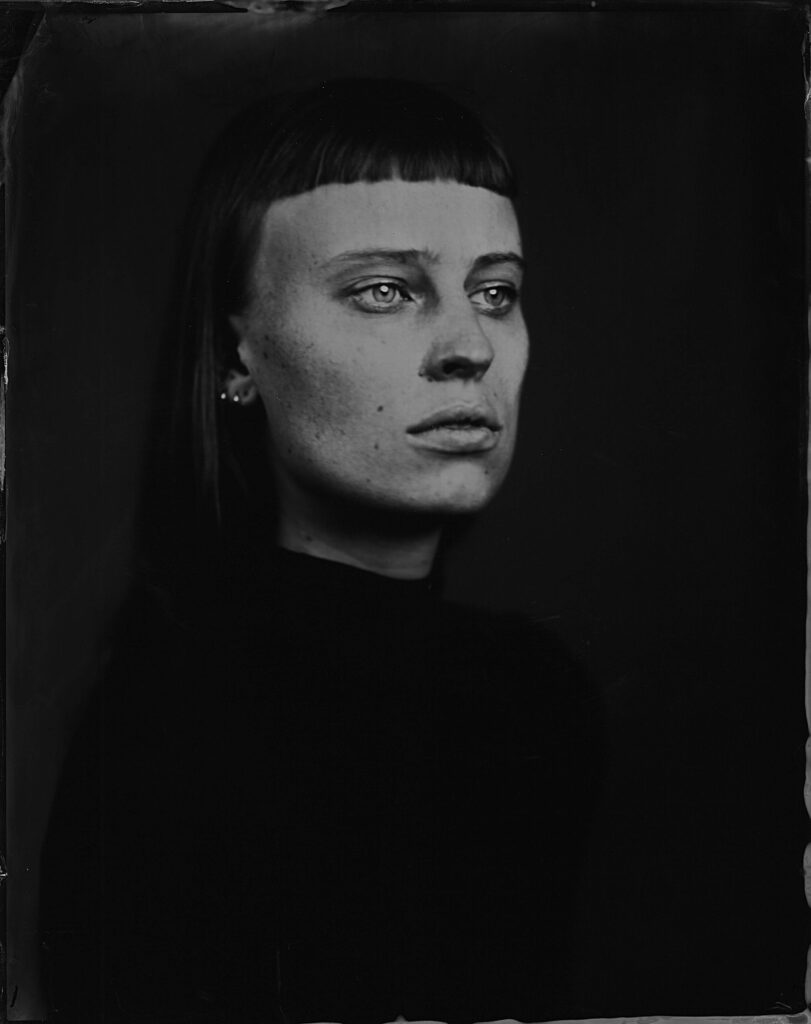
Principles of light
Every image of Principles of Light is created through the historical photography technique of collodion wet plating. Up till 1851, the default for taking a picture was daguerreotype photography, requiring approximately thirty minutes per photo. But sculptor and photographer Frederick Scott Archer experimented with using photosensitive glass instead of paper, reducing the time per picture to just a couple of minutes while creating images that were full of detail and depth. For collodion wet plating photography, a sheet of glass is coated with the binding substance collodion. When dipped in a solution of silver salts, that sheet turns light-sensitive.
Collodion wet plating is a contradiction of mysticism and science. An elusive interplay between the photographer, the subject, and the elements, as well as a precise chemical process. A duality of facts and uncertainties. Every speck of dust, every drip of collodion, and every passing second forms the final image in a choreograph of insecurity, as even humidity and temperature affect the process. Inspired by imperfectionist Sally Mann, Sevilay embraces this historical method of photography and its means of co-creation, where collodion wet plating builds upon impeccable chemistry between photographer and subject as well as the technical aspect involved.
In her work, Sevilay pushes the boundaries of what’s possible within the collodion wet plating technique. For example, by omitting the varnish, so the silver used on every plate will show signs of time passing in the form of natural oxidation or by combining her plate with materials such as steel. In Principles of Light, Sevilay chose black glass for her portraits, a rarity that hasn’t been made in years and won’t be made in the near future. In the era of fast photography, collodion wet plating forces the world to slow down. Within this vacuum, connections are formed, and encounters are captured on glass. Through her camera, Sevilay gets to know her subject. ‘I see something happening within someone – and feel something happening between the two of us. It’s a disarming moment of intimacy with a vintage camera as the narrator.’
Every image of Principles of Light is created through the historical photography technique of collodion wet plating. Up till 1851, the default for taking a picture was daguerreotype photography, requiring approximately thirty minutes per photo. But sculptor and photographer Frederick Scott Archer experimented with using photosensitive glass instead of paper, reducing the time per picture to just a couple of minutes while creating images that were full of detail and depth. For collodion wet plating photography, a sheet of glass is coated with the binding substance collodion. When dipped in a solution of silver salts, that sheet turns light-sensitive.
Collodion wet plating is a contradiction of mysticism and science. An elusive interplay between the photographer, the subject, and the elements, as well as a precise chemical process. A duality of facts and uncertainties. Every speck of dust, every drip of collodion, and every passing second forms the final image in a choreograph of insecurity, as even humidity and temperature affect the process. Inspired by imperfectionist Sally Mann, Sevilay embraces this historical method of photography and its means of co-creation, where collodion wet plating builds upon impeccable chemistry between photographer and subject as well as the technical aspect involved.
In her work, Sevilay pushes the boundaries of what’s possible within the collodion wet plating technique. For example, by omitting the varnish, so the silver used on every plate will show signs of time passing in the form of natural oxidation or by combining her plate with materials such as steel. In Principles of Light, Sevilay chose black glass for her portraits, a rarity that hasn’t been made in years and won’t be made in the near future.
In the era of fast photography, collodion wet plating forces the world to slow down. Within this vacuum, connections are formed, and encounters are captured on glass. Through her camera, Sevilay gets to know her subject. ‘I see something happening within someone – and feel something happening between the two of us. It’s a disarming moment of intimacy with a vintage camera as the narrator.’
